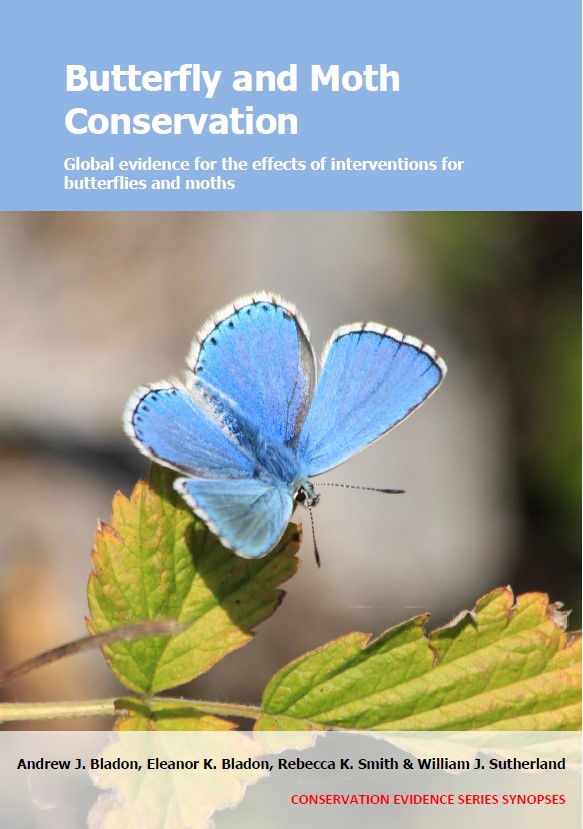Maintain or restore traditional water meadows and bogs
-
Overall effectiveness category Awaiting assessment
-
Number of studies: 5
View assessment score
Hide assessment score
How is the evidence assessed?
-
Effectiveness
not assessed -
Certainty
not assessed -
Harms
not assessed
Study locations
Supporting evidence from individual studies
A replicated, site comparison study in 1994 in 22 wet meadows in Bavaria, Germany (Dolek & Geyer 1997) found that the abundance and species richness of all butterflies, and of fenland specialist butterflies only, was similar in mown and grazed fens. The abundance of all species of butterfly (17.3 individuals) and of seven threatened fenland specialist species only (8.8 individuals) in lightly grazed meadows was not significantly different to the abundance in meadows mown once/year (all species: 16.8 individuals; specialist species: 8.6 individuals). The species richness of butterflies was also similar in grazed and mown meadows (data not presented). Twenty-two traditionally managed fens were compared. Eleven fens were mown once/year from September onwards, and 11 were grazed with cattle or horses. The mown sites received financial support to maintain management. From June–August 1994, butterflies were surveyed along a fixed transect five times in each meadow.
Study and other actions testedA replicated, site comparison study in 1993 in 34 fen meadows in Glamorgan, UK (Lewis & Hurford 1997) found that managing meadows by grazing or burning did not affect marsh fritillary Eurodryas aurinia population size compared to unmanaged meadows. There was no significant difference in the proportion of cattle-grazed (3/9), horse-grazed (2/6), sheep-grazed (0/2), burned (5/8 sites), mown (0/1) and unmanaged (4/8) sites that had >20 caterpillar webs recorded. However, the three largest populations (>200 caterpillar webs) were on sites burned in early spring. Caterpillar webs were present on 28/34 sites where adults had been recorded in May/June. In 1993, nine grasslands were cattle-grazed, six were horse-grazed, two were sheep-grazed, eight were burned, one was mown and eight were unmanaged. Sites were separated by >1 km of unoccupied grassland, or >0.5 km of unsuitable habitat. From late August–mid-October 1993, caterpillar webs were surveyed on 34 fen grasslands. On sites <2 ha, all devil’s bit scabious Succisa pratensis were searched in 2-m-wide parallel strips until the whole area had been searched. On larger sites, 2-m-wide strips at 10-m intervals were searched, and areas around caterpillar webs were then searched comprehensively.
Study and other actions testedA replicated, before-and-after study in 1992–2006 in a wet grassland in Wallonia, Belgium (Schtickzelle et al. 2007) found that cattle grazing reduced the use of wet grassland patches by bog fritillaries Proclossiana eunomia, and reduced the number of adults emerging. From 1–4 years after grazing of the wet grassland began, the number of bog fritillaries using grazed areas (6–10% of recaptures) was lower than before grazing started (17–44% of recaptures). The number of butterflies which emerged on grazed patches was also lower after grazing commenced than before grazing (data not presented). From July 2002–June 2004, Galloway cattle were grazed in a wet grassland reserve (June–September: 0.43–0.75 cows/ha; October–May: 0.11–0.38 cows/ha), but were excluded from four patches of high-quality bog fritillary habitat that were monitored (1.05 ha). In the grazed areas, three patches of low-quality habitat (1.26 ha) were monitored. From 1992–2006, bog fritillaries were monitored by catching, marking, releasing and re-catching individuals in all seven patches (details not provided). Each year, the “use rate” of each patch (number of recaptures within the patch divided by the total number of recaptures across all patches) and “emergence” (number of butterflies caught soon after emergence in each patch) were calculated.
Study and other actions testedA site comparison study in 2004–2008 on five wet grasslands in Cornwall, UK (Smee et al. 2011) found that sites grazed by cattle at an intermediate intensity supported the highest abundance of marsh fritillary Euphydryas aurinina caterpillars, but there was no difference in adult abundance between sites with different grazing intensities. The abundance of marsh fritillary caterpillar webs was higher at sites with intermediate grazing intensity (6.5 webs) than sites with high (1.6 webs) or low (3.7 webs) grazing intensity, but the abundance of adults did not differ between sites (data not presented). Five wet grasslands with populations of marsh fritillary were managed by cattle grazing at different intensities, and occasional burning (no further details provided). In May–June 2004–2008, adult butterflies were surveyed twice/year on 33 transects across the five sites. In August–September 2004–2008, caterpillar webs were surveyed on the same transects, and in fixed plots (number not specified). At 30 points along each transect, evidence of stock grazing was recorded to estimate grazing intensity.
Study and other actions testedA replicated, before-and-after study in 2014–2016 in six wet meadows in Świętokrzyskie Voivodeship, Poland (Błoński 2016) reported that after trees and shrubs were removed from the wet meadows the number of marsh fritillary Euphydryas aurinia caterpillar webs increased the following year. Results were not tested for statistical significance. One year after trees and shrubs were removed there were 14–57 webs/site, compared to 8–35 webs/site the previous year. From 2014–2015, six meadows were managed by manual cutting and mowing of trees and bushes (at one site marsh fritillary caterpillar webs were also marked with flags so that they could be avoided during mowing). In August–September 2014–2016, marsh fritillary caterpillar webs were surveyed at each site (four sites in 2014 and 2015, two sites in 2015 and 2016).
Study and other actions tested
Where has this evidence come from?
List of journals searched by synopsis
All the journals searched for all synopses
This Action forms part of the Action Synopsis:
Butterfly and Moth Conservation
Butterfly and Moth Conservation - Published 2023
Butterfly and Moth Synopsis





)_2023.JPG)














